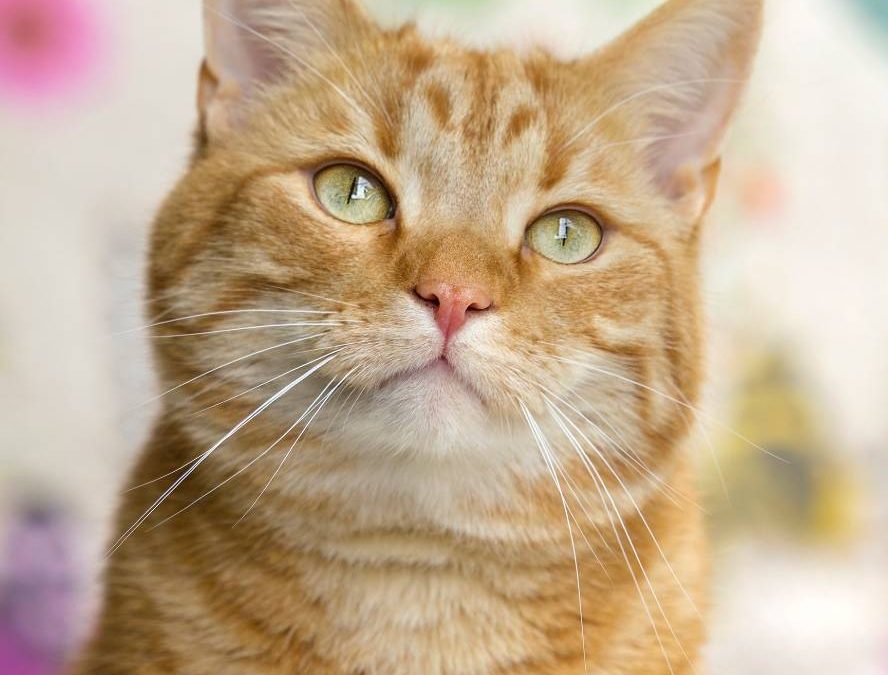Understanding which vaccines your cat needs is an important part of being an educated pet owner. While it’s understandable that you don’t know everything there is to know about cat vaccinations and the diseases they protect against, understanding the basics outlined below will help to make your veterinary visit less stressful.
It may surprise you to learn that not all cats get the same vaccines. Your veterinarian will determine which vaccines are necessary to keep your cat healthy based on your cat’s environment and lifestyle.
If my cat is indoors only, why does it still need vaccinated?
Without exposure to other animals or humans, indoors only cats don’t get the regular boosting to their immune system that other cats do. This puts them at a greater risk when exposed to the viruses we bring home on our clothes or shoes.
If your cat does not get these vaccinations, their immune system will be unable to fight these diseases and they will be at risk of serious illness or death.
What are the diseases my cat may need vaccinated against?
There are two categories of vaccines, core and non-core.
Core vaccines are recommended for all cats. At this time the core vaccines are:
- Feline panleukopenia (FPL) – also called feline distemper
- Feline Viral Rhinotracheitis (FVR)
- Feline Calici Virus (FCV)
*these first 3 core vaccines listed are typically combined into one booster shot (FVRCP)
- Rabies – while rabies is sometimes considered a non-core vaccine, it is required by law in many areas
Non-core vaccines are administered based on risk assessment according to your cats environment and lifestyle. At this time the non-core vaccines are:
- Feline Leukemia (FELV)
- Feline Immunodeficiency Virus (FIV)
- Feline Infectious Peritonitis (FIP)
- Feline Chlamydiosis
- Bordetella Bronchiseptica
How does my veterinarian decide which vaccines my cat will need?
There are many factors that veterinarians consider when deciding which vaccines each cat needs.
Some of these factors include:
- Age
- How many cats live in the household
- Exposure to other cats
- Introduction of new cats into the household
- Stress associated with the change of social demographics (this can suppress the immune system, making them more susceptible to infection and disease)
- Possibility of staying in boarding facilities or traveling in the future
- Location (geographic distribution of infectious agents may result in different risks of exposure for cats living in different areas)
- Previous vaccination history
The overall purpose of vaccination is to protect each cat against infectious agents to which they have a realistic risk of exposure, while vaccinating no more frequently than necessary.
Due to the large list of factors that play a part in determining which vaccines your cat needs and how frequently they need boostered, it is necessary to reassess with your veterinarian every year.
Why do the cost and frequency of giving these vaccines vary?
High quality vaccines have become more and more expensive for vaccine makers, as they are highly regulated and pharmaceutical companies must jump through hoops to produce new and updated vaccines. The result? These costs are passed on to veterinary practices, making some vaccines more expensive than others.
For example, some drug companies have improved the formula enough for vaccines that used to commonly cause tumors at the injection site to a point where this is very rare. In addition to improving the formula of vaccines, they are also able to create longer acting protection for some diseases. This can affect the price of vaccines, as well as the frequency of boosters needed.
Vaccines that don’t contain the most up to date formulations aren’t necessarily unsafe, but it could mean they aren’t able to trigger as strong of an immune response as newer, more expensive shots.
In order to avoid multiple injections, some vaccines are configured to protect against more than one disease in one injection. Likewise, some diseases have multiple variations within a species of bacteria or virus. Formulating vaccines that contain all possible variations adds more expense.
Fecal Testing:
Your veterinarian may ask you to bring in a stool or fecal sample at your cat’s annual exam to check for intestinal parasites or “worms.” Some of the parasites they are testing for include roundworms, hookworms, tapeworms, coccidia, and giardia. Some of these parasites are also a risk for humans, with children being at high risk due to their play habits and affection for pets.
Cats can get internal parasites from eating a flea while grooming, eating rodents or insects, or ingesting contaminated soil or water. Indoor-only cats, while at lower risk, can still be exposed to parasites from pets that do spend time outdoors, or even from people bringing parasite eggs from outside.
This test is not required but is recommended annually. There is no individual deworming medication that will treat every type of parasite at once; therefore, the fecal test will determine which medication your pet needs.
If your cat is experiencing the following symptoms, a fecal test is highly recommended.
- Weight loss accompanied by a marked increase or decrease in appetite
- Distended abdomen, or ‘pot-bellied’ appearance
- Lethargy
- Vomiting
- Diarrhea/chronic soft stools
- Rubbing or dragging the hindquarters across the ground
- Visible presence of segments of tapeworms in cats attached to the skin and fur around the anus/hindquarters area; looks like tiny grains of rice or small flat segments of a worm
- Visible presence of roundworms in cats in infected stool; looks like spaghetti
Keep in mind, worms don’t always shed their eggs in the stool. Therefore, a negative result doesn’t completely rule out the possibility that worms are present. For this reason, your veterinarian may recommend treatment anyway, especially if your cat is having any of the symptoms listed above.
What is a microchip?
Microchips provide a form of permanent identification for your pet. Unlike a collar with tags, a microchip cannot fall off or get lost. The American Veterinary Medical Association (AVMA) did a study on more than 7,700 stray animals at animal shelters. The results showed that cats without microchips were returned to their owners 1.8% of the time, while cats WITH a microchip were returned to their owner 38.5% of the time. Microchipping represents a significant improvement in the chances that your pet will be returned home!
These tiny implants, the size of a large grain of rice, are typically injected under the skin between the shoulder blades using a needle and syringe similar to their vaccinations. The needle used for microchipping is slightly larger than needles used for vaccinations, and are no more painful than a typical injection. A microchip can be inserted at a routine vaccination visit or while your pet is sedated for a procedure, such as spaying or neutering.
Veterinarians and animal shelters have a scanner that uses radio waves to detect the chip, which then transmits the unique alphanumeric code registered to your cat. The key here is to make 100% sure you remember to register your cat with the pet recovery database. It is also important to update your information in the event you have a change of address or phone number.
When do cats need a Feline Leukemia Test (FeLV test)?
For the majority of cats and kittens, it is highly recommended to test for Feline Leukemia prior to administering the vaccine. Once a negative result has been established, your veterinarian will determine the schedule for these vaccinations depending on age and risk level. Examples of high risk are living or going outdoors and catfights. Also, if your cat is new to the family or you adopt another cat, testing is recommended before you introduce the new cat to other cats in the household.
If your cat is not considered high risk, has had a negative test, and received the Feline Leukemia vaccine per their veterinarian’s recommended schedule, they typically don’t need another test unless they become ill or a high-risk situation should occur.
Because our pets are considered as part of our family, many pet owners are becoming more involved in the health care of their pets. Understanding the importance of the different vaccinations, staying on a vaccine schedule, and communicating with your veterinarian to determine which vaccines are necessary will help keep your cat healthy.
Click here to download your free Feline Patient Visit Sheet to communicate your questions and concerns with your veterinarian.


Recent Blog Comments